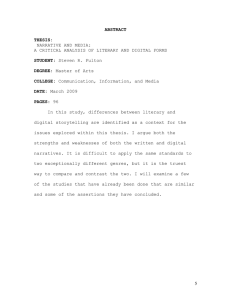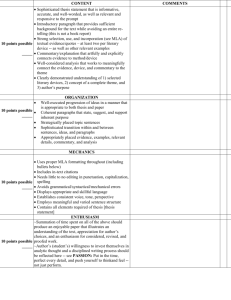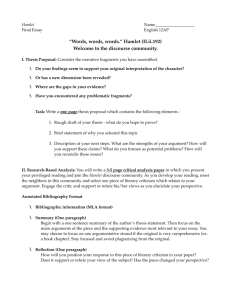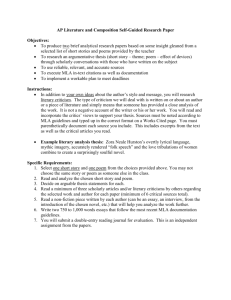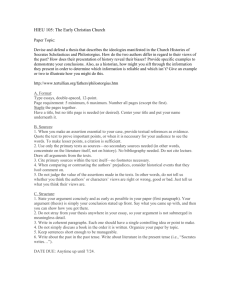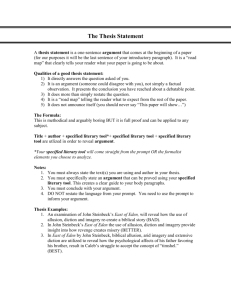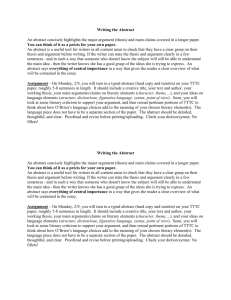Writing an Extended Literary Analysis
advertisement
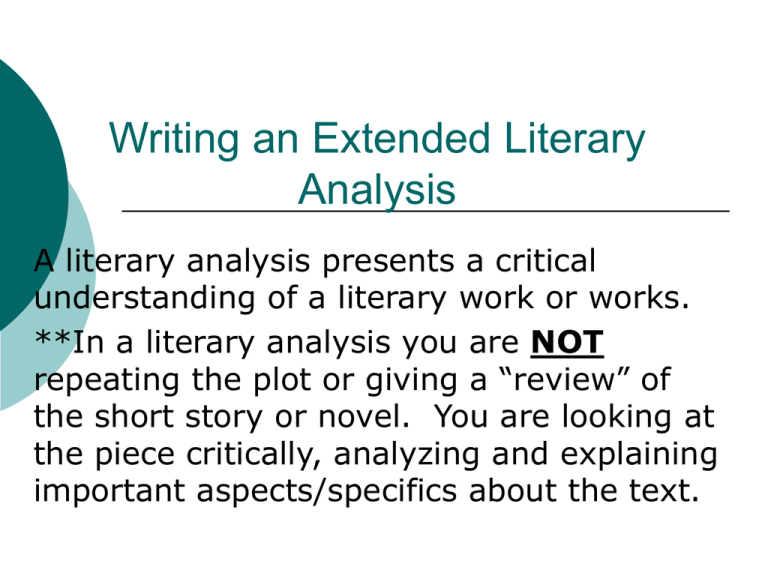
Writing an Extended Literary Analysis A literary analysis presents a critical understanding of a literary work or works. **In a literary analysis you are NOT repeating the plot or giving a “review” of the short story or novel. You are looking at the piece critically, analyzing and explaining important aspects/specifics about the text. The Basics This form of analysis should be based primarily on your own interpretation of your subject. However… Refer to important critics to support your main ideas or to offer alternative interpretations. An effective extended analysis synthesizes information from multiple sources into a thoughtful, unified essay. You must cite directly from the text being discussed! Use proper MLA documentation throughout your paper. Be sure to include a works cited page at the end as well. (Authors last name, page number) All papers should be at least 4 pages. (2000 words) Getting Started 1. Establish a thorough understanding of your subject: carefully read (and reread if necessary) the selected piece of literature. 2. Think about features (possible focus points) from the text that you could write about: Analysis of Theme Analysis of Character (s) Plot structure Analysis of Setting Symbolism Analysis of Style Interpretation Analysis of Images/figurative language 3. Take notes to ensure comprehension of the text. 4. Make sure that you can support your focus with direct references to the text. (MLA documentation) Introduction Be sure to name the work and its author early in the first part of the paper. “Mary Shelley’s Frankenstein is one of the most wellknown novels of the Romantic era. The story is one that has seeped into the popular imagination…” Explain your points of interest. What are you analyzing? What is your focus? Start with a quotation from the book and then comment upon its importance in terms of your focus for the analysis. Explain a possible disagreement, textural problem or overall structural problem that you see with the text. Express your praise for how the author may have capitalized on a certain aspect of the piece. Thesis statement should be clear and illustrate the focus of your paper. Body All paragraphs must support your thesis and work toward a solution to the problem you have stated OR praise the area of interest you have discussed in the introduction. Be sure every paragraph has a unified topic which helps develop your argument. Use specific quotes and examples from the work you are discussing. Analyze characters carefully: What they do What they say How others treat them How they treat other people What others say about them What the narrator says etc.. Isolate main issues and find words, lines, to justify your emphasis. Cite important critics who support your thesis. Answer critics who argue against your thesis. Use your best arguments and strongest examples last. Conclusion Review the argument which you have pursued and restate the thesis. Highlight the importance of your argument. Leave your reader feeling satisfied that you know the material, discussed it fairly, and argued your thesis convincingly. Never end a paper with another critic’s words or raise a question! Go out with a direct statement in your own words.
